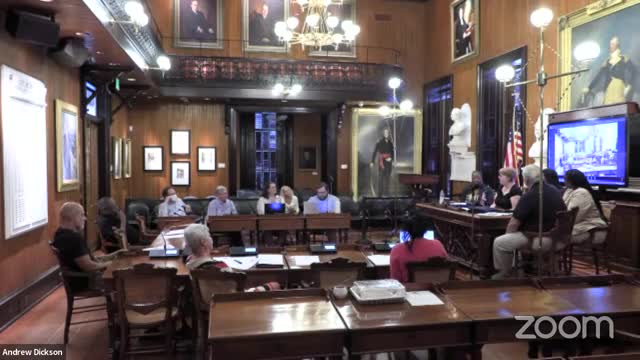Housing Initiative Aims to Transform Lives of the Homeless
September 12, 2024 | Charleston City, Charleston County, South Carolina
This article was created by AI summarizing key points discussed. AI makes mistakes, so for full details and context, please refer to the video of the full meeting. Please report any errors so we can fix them. Report an error »

In a recent government meeting, representatives from various agencies discussed a comprehensive approach to addressing homelessness and housing insecurity in the community. The focus was on providing immediate emergency services while also implementing long-term solutions through case management and collaborative initiatives.
One key speaker highlighted the dual strategy employed by their organization, Neighbors Together, which includes offering emergency assistance such as groceries, hot meals, clothing, hygiene products, and support for overdue rent and utilities. Additionally, they provide prescription assistance and help clients obtain essential items like dentures and eyeglasses. However, the speaker emphasized that while these emergency services are crucial, they do not fundamentally change individuals' situations. Instead, they advocate for a case management model that empowers clients to set their own goals and connect them with necessary resources.
A significant initiative discussed was the \"Gateway to Housing\" program, aimed at tackling the pressing issue of affordable housing. This low-barrier housing model seeks to remove obstacles that prevent individuals from securing housing, such as low credit scores or eviction records. The program offers financial incentives to landlords willing to eliminate one of these barriers and includes a risk mitigation fund to alleviate concerns about potential property damage by tenants who have experienced homelessness.
The meeting also featured a collaborative roundtable, consisting of approximately 72 members from around 50 agencies, working on various projects to address homelessness. The roundtable has been active for over a year and aims to create a hub of services that clients can access easily, particularly those facing transportation challenges.
Funding for the Gateway to Housing initiative is being provided by the City of Charleston and Charleston County, with plans to launch the program in the coming months. The speaker expressed optimism that this initiative could significantly impact the local housing crisis by utilizing existing inventory rather than requiring new construction.
Overall, the discussions underscored a commitment to not only provide immediate relief for those in need but also to implement sustainable solutions that address the root causes of homelessness and housing insecurity in the community.
One key speaker highlighted the dual strategy employed by their organization, Neighbors Together, which includes offering emergency assistance such as groceries, hot meals, clothing, hygiene products, and support for overdue rent and utilities. Additionally, they provide prescription assistance and help clients obtain essential items like dentures and eyeglasses. However, the speaker emphasized that while these emergency services are crucial, they do not fundamentally change individuals' situations. Instead, they advocate for a case management model that empowers clients to set their own goals and connect them with necessary resources.
A significant initiative discussed was the \"Gateway to Housing\" program, aimed at tackling the pressing issue of affordable housing. This low-barrier housing model seeks to remove obstacles that prevent individuals from securing housing, such as low credit scores or eviction records. The program offers financial incentives to landlords willing to eliminate one of these barriers and includes a risk mitigation fund to alleviate concerns about potential property damage by tenants who have experienced homelessness.
The meeting also featured a collaborative roundtable, consisting of approximately 72 members from around 50 agencies, working on various projects to address homelessness. The roundtable has been active for over a year and aims to create a hub of services that clients can access easily, particularly those facing transportation challenges.
Funding for the Gateway to Housing initiative is being provided by the City of Charleston and Charleston County, with plans to launch the program in the coming months. The speaker expressed optimism that this initiative could significantly impact the local housing crisis by utilizing existing inventory rather than requiring new construction.
Overall, the discussions underscored a commitment to not only provide immediate relief for those in need but also to implement sustainable solutions that address the root causes of homelessness and housing insecurity in the community.
View full meeting
This article is based on a recent meeting—watch the full video and explore the complete transcript for deeper insights into the discussion.
View full meeting